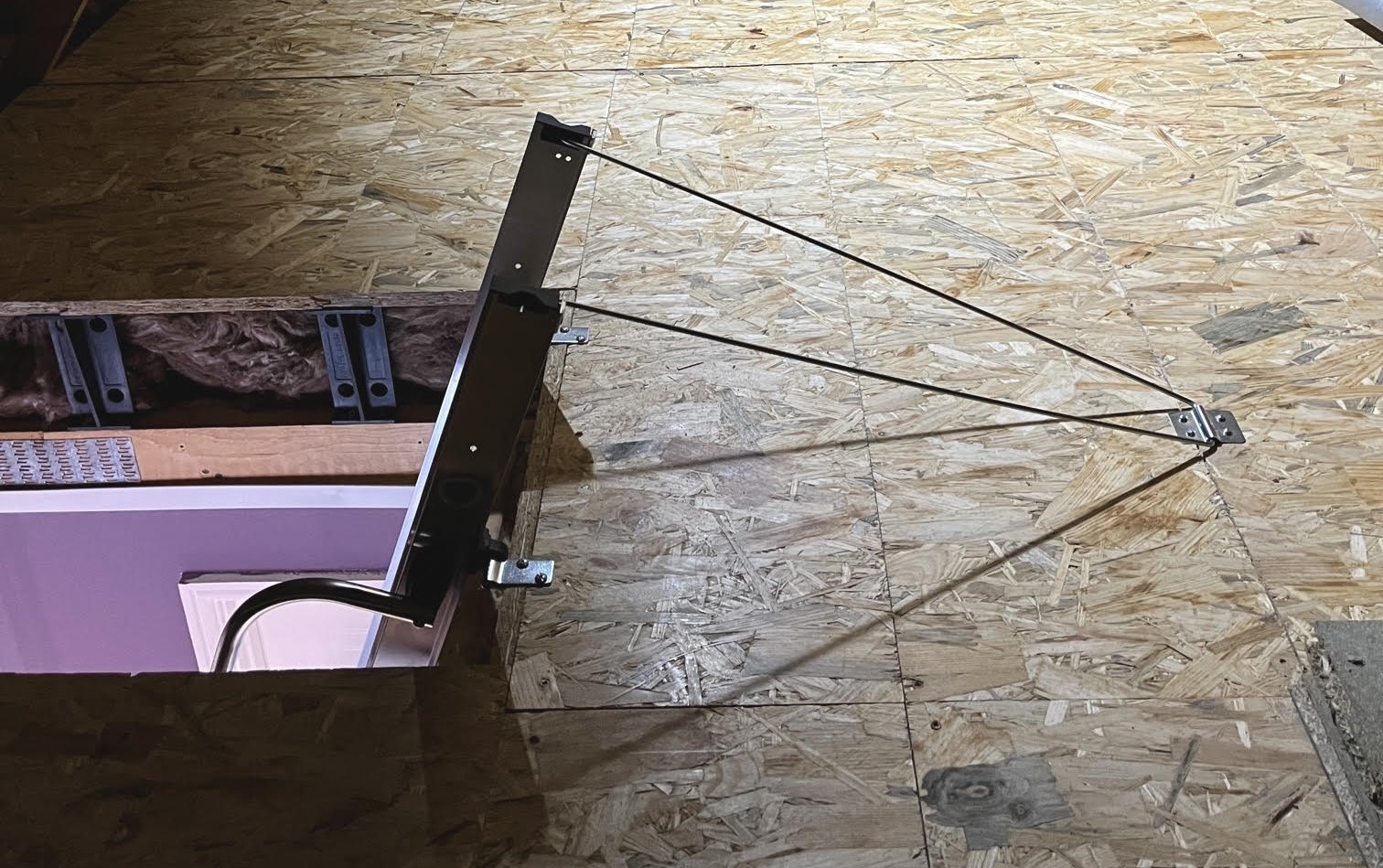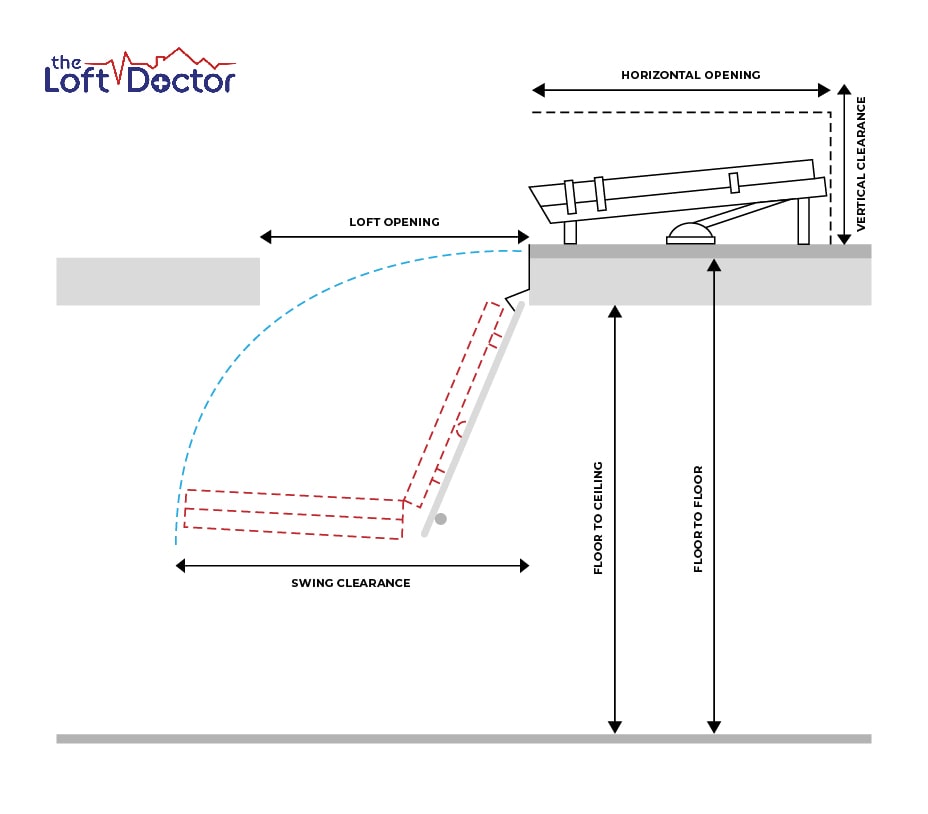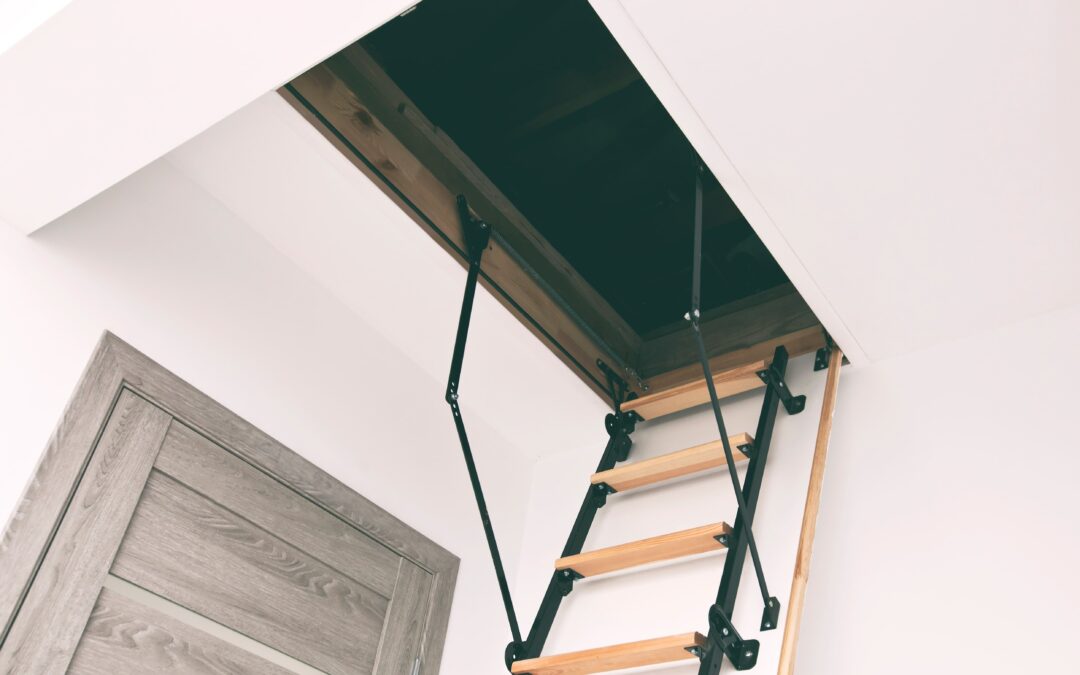If you want to begin making use of your loft space then you are going to need a way to get in and out of your loft conveniently. For most properties, the best way of achieving this is with a loft ladder and hatch.
You are saving a lot of space in your home by using a loft hatch ladder because you can easily tuck it out of sight when not needed, disguising it from view behind the closed hatch. And because you are not having to build a brand-new fixed staircase and doorway, you are saving time and money too.
Here is everything you might need to know about loft ladders so you can determine what style and size suits your needs.
Not all loft ladders are the same. There are concertina, telescopic, folding, and sliding loft ladders to choose from, and they arfghs.
While you may have a personal preference on what type of ladder you would like, the choice is often made for you by the dimensions of your landing and your loft.
Carry on reading for more information on each type of loft ladder, and what circumstances would make each one the best choice.
The most basic of loft ladders is the sliding loft ladder. This type of ladder is often made out of lightweight aluminium and comes with two or three sections that slide in or out and lock into place for safety and ease of use.
For most properties where the loft operates as an extra storage space that gets minimal traffic, a sliding loft ladder will be a good choice. They can save you money as they can be inexpensive compared to other types of ladders, and it may be possible to install them without having to change your current loft hatch.
However, there are drawbacks to sliding ladders. For example, because they are independent of the loft hatch itself, they require the most amount of clearance to be stowed away in the loft.

Folding loft ladders are another great choice of ladder for most properties. These ladders are often made of timber and come in two or three sections that fold rather than slide, sturdily locking in to place when being used.
For lofts that are short on space, a folding loft ladder would be an excellent option. The first section of the ladder is fixed to the loft hatch door so, when not in use, the ladder can be folded in on itself and easily closed without requiring horizontal clearance to store the ladder like a sliding ladder would.
Folding loft ladders are often more expensive than sliding ones because they come as a kit with a new loft hatch. However, because the ladder and loft hatch door are custom made to fit together, this often results in a better fitting hatch with no drafts, meaning that they are often better for energy efficiency.
Concertina loft ladders are infrequently seen in properties, but may be the right option for you if you are severely restricted on space in your loft.
These ladders are able to compress and expand in the same way that a concertina or an accordion does, meaning that they occupy very little vertical clearance when closed. They are fixed to the loft hatch in a similar way to how folding loft ladders are, so no horizontal space is needed for storage either.
They are often more expensive options compared to sliding or folding loft ladders, as they are more so built for heavy duty applications as opposed to residential purposes.
Telescopic loft ladders are the most technologically advanced manual ladder out of the four most popular types of loft ladders.
These ladders take up even less space than concertina loft ladders because they retract within themselves. This means that they require the least amount of loft storage space than any other type of ladder, making them the best choice for very tight and confined spaces, and they also require no swing clearance in your landing.
Unfortunately, with their advanced design comes a high price point, and they are frequently much more expensive than sliding, folding, and even concertina loft ladders.
Loft ladder size guide
There are multiple measurements that we will have to take in your landing and your loft so that we can determine what ladder type and size you will need. Some ladders require different measurements be taken than others.
We will measure:
- Vertical and horizontal loft clearance
- Floor to ceiling height of your landing
- Landing floor to loft floor height
- Loft opening dimensions
- Swing clearance
Loft clearance is important because there must be enough room in your loft to store the ladder when the hatch is closed. Folding, concertina, and telescopic ladders often require less clearance than sliding loft ladders do because they are housed on the loft hatch door.
If you require a folding ladder, then we will take a floor to ceiling measurement in your landing. This is because the ladder is fixed to the loft hatch, so will drop when the hatch is opened.
If you require a sliding, concertina, or telescopic ladder, then we will take a floor-to-floor measurement. This is because the ladder is separate to the loft hatch, so will have to be pulled down separately to the hatch door.
Swing clearance is an important measurement if you want a folding loft ladder, because there may be enough room in your landing for the ladder when it is fully extended but not enough room to account for its size when unfolding.

If we are working on your property, our time served tradesmen will first carry out an MOT on your loft to ensure that it is safe and fit for purpose.
We will carry out all of the required measurements ourselves, and will provide our own tools and ladders to enter your loft space, so you can rest easy knowing that your home is in safe hands. We’ll then contact you to provide you with a list of eligible loft ladders for you to choose from.
To get started making the most of your home, contact our team here and we will be in touch!

